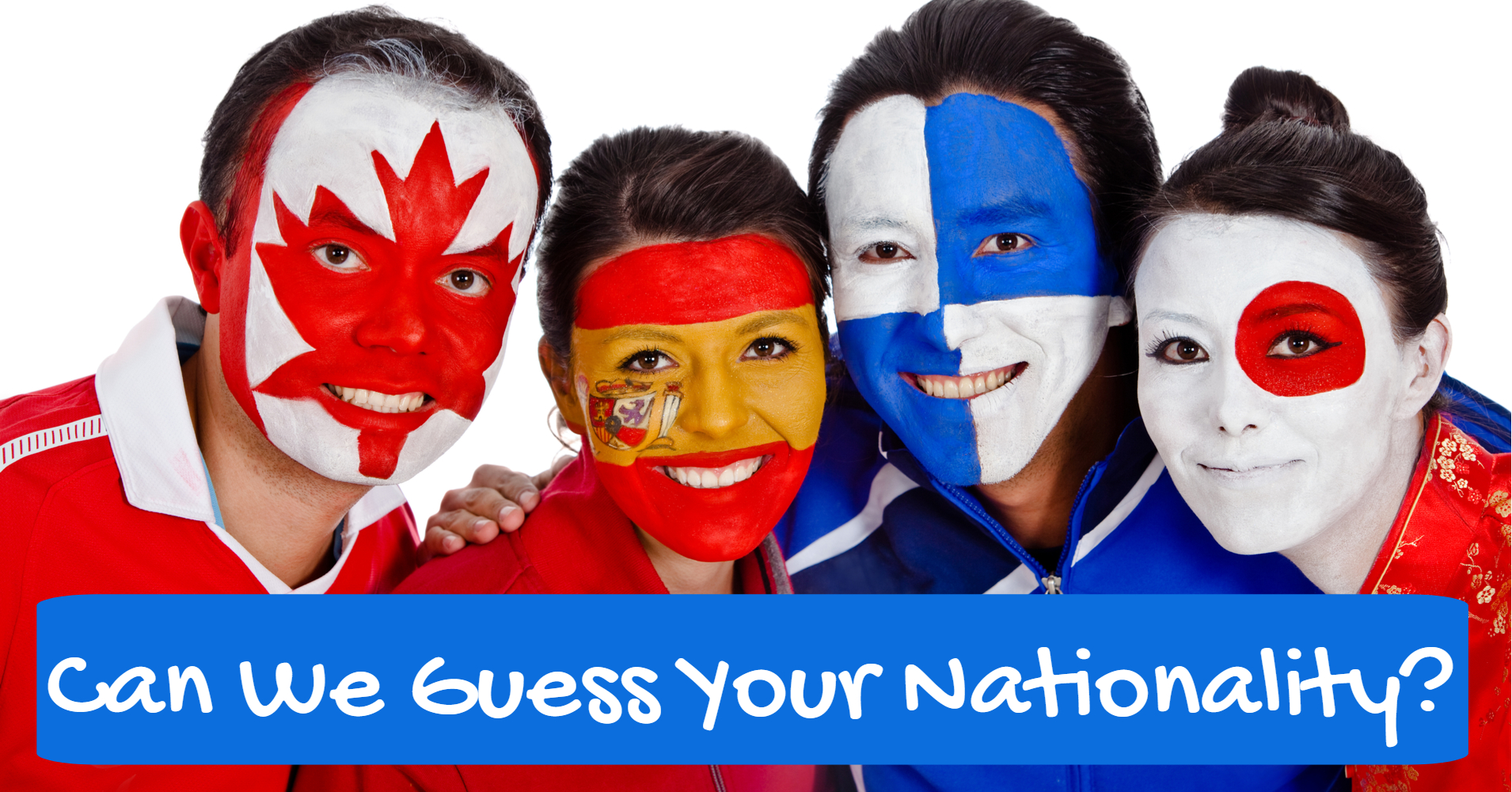Guessing someone's nationality based on their facial features might seem like a fun game, but it has deep implications in understanding cultural diversity and human identity. This practice, often rooted in anthropology and sociology, sheds light on how we perceive others and ourselves. As globalization continues to blur cultural boundaries, recognizing nationalities through physical traits becomes both an intriguing challenge and a fascinating study.
Facial recognition technology and cultural studies have significantly advanced our understanding of human diversity. However, guessing someone's nationality by their face is not merely about identifying physical characteristics; it’s also about appreciating the rich tapestry of cultures that shape us. This article will delve into the science, ethics, and cultural nuances behind this concept.
Through expert analysis and credible data, we’ll explore how facial features can sometimes hint at one's origins while acknowledging the limitations and potential pitfalls of such assumptions. Let's begin this journey into the world of cultural identity and facial recognition.
Read also:Chris Sacca Net Worth How Did He Build His Fortune
Table of Contents
- Introduction to Guess the Nationality by Face
- The Science Behind Facial Recognition
- How Nationality Influences Facial Traits
- Limitations of Guessing Nationality
- Ethical Considerations
- Globalization and Its Impact
- Tools and Technologies
- Case Studies
- Tips for Accurate Guessing
- Conclusion
Introduction to Guess the Nationality by Face
Guessing someone's nationality by their face is a practice that combines art and science. While it may appear as a casual pastime, it carries significant implications for cross-cultural communication and understanding. People often rely on facial features such as eye shape, nose structure, and skin tone to make educated guesses about a person's origin. However, this approach is far from foolproof.
Research in anthropology and genetics has revealed that while some physical traits are more common in specific populations, they are not definitive indicators of nationality. This section will explore the basics of this concept and why it matters in today's interconnected world.
The Science Behind Facial Recognition
Understanding Human Perception
Facial recognition is a complex process that involves the brain's ability to identify and remember faces. Studies show that humans are naturally inclined to categorize others based on visible characteristics. This tendency can be traced back to evolutionary psychology, where recognizing group members was crucial for survival.
Modern neuroscience has further unraveled the mechanisms behind facial recognition. The fusiform face area (FFA) in the brain plays a key role in processing facial information. This area helps us distinguish between familiar and unfamiliar faces, as well as identify subtle differences in features.
How Nationality Influences Facial Traits
Genetic and Environmental Factors
Nationality can influence facial traits through a combination of genetic and environmental factors. For instance, people from certain regions may share similar physical characteristics due to shared ancestry. However, environmental influences such as climate and diet also play a significant role in shaping appearance.
Some common traits associated with specific nationalities include:
Read also:Pax Thien Joliepitt Net Worth A Comprehensive Guide To His Life And Financial Standing
- East Asian populations often have epicanthic folds and almond-shaped eyes.
- Scandinavian individuals frequently exhibit fair skin and light-colored hair.
- African descendants typically have darker skin tones and fuller facial structures.
Limitations of Guessing Nationality
Challenges in Accurate Identification
While guessing nationality by face can be an interesting exercise, it is fraught with challenges. The increasing global mobility and intermarriage have led to a blending of physical traits, making it harder to pinpoint someone's origin based solely on appearance. Additionally, cultural assimilation and personal choices can further complicate the process.
A study published in the Journal of Cross-Cultural Psychology found that participants struggled to accurately guess nationalities when presented with diverse facial images. This highlights the limitations of relying solely on physical cues.
Ethical Considerations
Avoiding Stereotypes and Bias
Guessing someone's nationality by their face raises important ethical questions. Stereotyping and bias can lead to discrimination and misunderstandings. It is essential to approach this topic with sensitivity and awareness of its potential consequences.
Experts recommend focusing on individuality rather than generalizations. Emphasizing shared humanity and cultural exchange can foster greater understanding and respect among diverse populations.
Globalization and Its Impact
Blurring Cultural Boundaries
Globalization has significantly impacted how we perceive nationality and identity. Increased migration and cultural exchange have resulted in a more interconnected world where traditional boundaries are becoming less distinct. This shift challenges our ability to guess someone's nationality based on their appearance.
For example, individuals with mixed heritage may exhibit features from multiple cultures, making it difficult to assign them to a single nationality. This phenomenon underscores the importance of embracing diversity and celebrating multiculturalism.
Tools and Technologies
Facial Recognition Software
Advancements in technology have introduced sophisticated tools for analyzing facial features. Facial recognition software uses algorithms to detect patterns and match them to databases of known faces. While these tools can provide insights into ancestry and origins, they are not infallible.
Companies like Face++ and Microsoft Azure offer facial recognition services that can estimate age, gender, and even ethnicity. However, their accuracy varies depending on the quality of data and the diversity of the training datasets.
Case Studies
Real-World Examples
To better understand the complexities of guessing nationality by face, let’s examine a few case studies:
- Case 1: A person of Korean descent living in Brazil may exhibit both Asian and Latin American traits, complicating nationality identification.
- Case 2: An individual with mixed African and European ancestry might have features that defy traditional categorization.
- Case 3: A third-generation immigrant in the United States may not resemble their ancestors due to environmental and cultural influences.
These examples illustrate the challenges and nuances involved in this practice.
Tips for Accurate Guessing
Enhancing Your Skills
If you're interested in improving your ability to guess someone's nationality by their face, consider the following tips:
- Study the geography and history of different regions to understand common physical traits.
- Pay attention to subtle details such as bone structure, hair texture, and skin tone.
- Be open-minded and avoid jumping to conclusions based on stereotypes.
- Engage in cross-cultural interactions to broaden your perspective.
Remember that accuracy is not the ultimate goal; appreciation and respect for diversity should always take precedence.
Conclusion
Guessing someone's nationality by their face is a fascinating yet complex endeavor. While it offers insights into human diversity and cultural identity, it also highlights the limitations of relying on physical appearances. By combining scientific knowledge, ethical awareness, and technological advancements, we can deepen our understanding of this topic.
We invite you to share your thoughts and experiences in the comments below. Your feedback helps us create more informative and engaging content. Don’t forget to explore other articles on our site for further reading on related subjects.
Data Sources:

